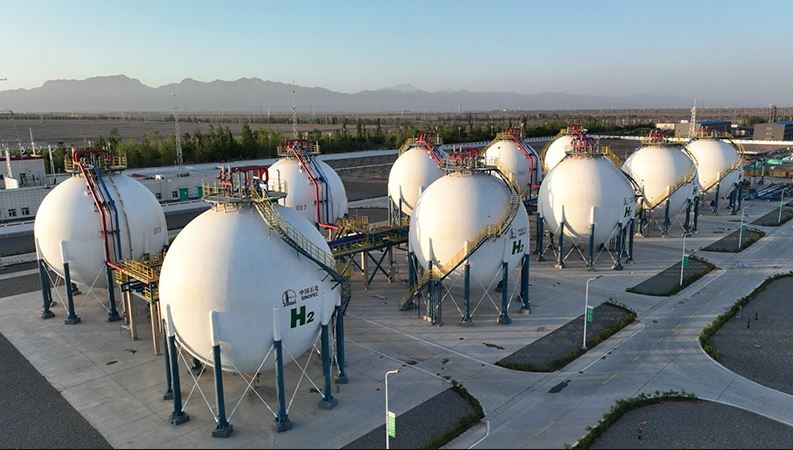Sinopec has started operating the world’s largest solar-to-hydrogen project and the first of its kind in China. The facility in the Xinjiang region includes a PV generation complex, power transmission lines, a water electrolysis hydrogen production plant, hydrogen storage, and transport infrastructure. It aims to produce 20,000 tons of green hydrogen per year by using solar power for electrolysis. It has the capacity to store 210,000 cubic meters of hydrogen and transport 28,000 cubic meters per hour.
The Indian Ministry of New and Renewable Energy (MNRE) has released guidelines to incentivize green hydrogen and electrolyzer production. The first round will launch bids for 1.5 GW of electrolyzer capacity. Bidders can offer a minimum capacity of 100 MW and a maximum capacity of 300 MW. Incentives will remain in effect for five years starting from the commencement of electrolyzer production.
Verde Hydrogen has agreed to develop and commission a 2 MW green hydrogen electrolyzer project in Morocco. “The project will complete its installation in early 2024,” said the US-based company. The project features Verde Hydrogen’s 2 MW containerized electrolyzers, with five modules in total, including two 20-foot containers and two 40-foot containers in a compact design.
The Spanish government has revised its 2030 hydrogen targets, nearly tripling them in the latest draft of its mational energy and climate plan. “About 11 GW of electrolyzers are planned for 2030 for the production of renewable hydrogen, mainly for industrial uses,” said the government. “The 11 GW is also an increase over the first estimates in the hydrogen roadmap, which set a target of 4 GW of electrolysis by 2030.”
Portugal has doubled its 2030 hydrogen targets, as stated in the latest draft of its National energy and climate plan. The Portuguese government said that it expects 5.5 GW of installed electrolysis capacity by 2030. Previously, the target was set at 2.5 GW of electrolysis capacity. The European Commission has told pv magazine Italia that Portugal and Spain are among the seven countries that have submitted their updated plans within the deadline.
Trelleborg Sealing Solutions has launched a range of sealing materials for various applications in the hydrogen value chain. This includes a new high-pressure ethylene propylene diene monomer (EPDM) rubber designed to perform well in a wide temperature range, and a thermoplastic polyurethane (TPU) optimized for extremely low temperatures. The Sweden-based engineering group claims that the materials exhibit superior resistance to rapid gas decompression and showcase excellent wear and extrusion properties.
Topsoe has selected Aveva Process Simulation to model its Solid Oxide Electrolyzer Cells (SOECs) in order to optimize their design and establish an effective control strategy. The industrial software company said that Aveva Process Simulation is playing a role in accelerating the energy transition by enabling Topsoe’s engineers to enhance the speed and efficiency of electrolyzer design and optimization.
HyCC has contracted McPhy for the supply of electrolyzers and Technip Energies for the design and construction of a 20 MW green hydrogen plant in Delfzijl, the Netherlands. The execution of the contract is contingent upon a final investment decision, which HyCC intends to make later this year. The plant, operated by HyCC, will use McPhy’s electrolyzers to produce up to 3,000 tons of green hydrogen per year from renewable power and water. OCI Methanol Europe will use the green hydrogen to produce renewable methanol, resulting in a reduction of up to 27,000 tons of CO2 emissions per year, said HyCC.
This content is protected by copyright and may not be reused. If you want to cooperate with us and would like to reuse some of our content, please contact: editors@pv-magazine.com.








Since H2 takes 4x the total energy/mile and making power with H2 because of all the conversion, storage losses, also takes 4x the energy/kwh.
Not sure how it can be viable in either case and certainly not green.
Now that H2 is being built, used and the facts about how bad, costly it is, like the last 4x over 50 yrs, it’ll just fade away.
Drop in Synfuels and EVs with V2G will do the same thing at fraction of the cost.